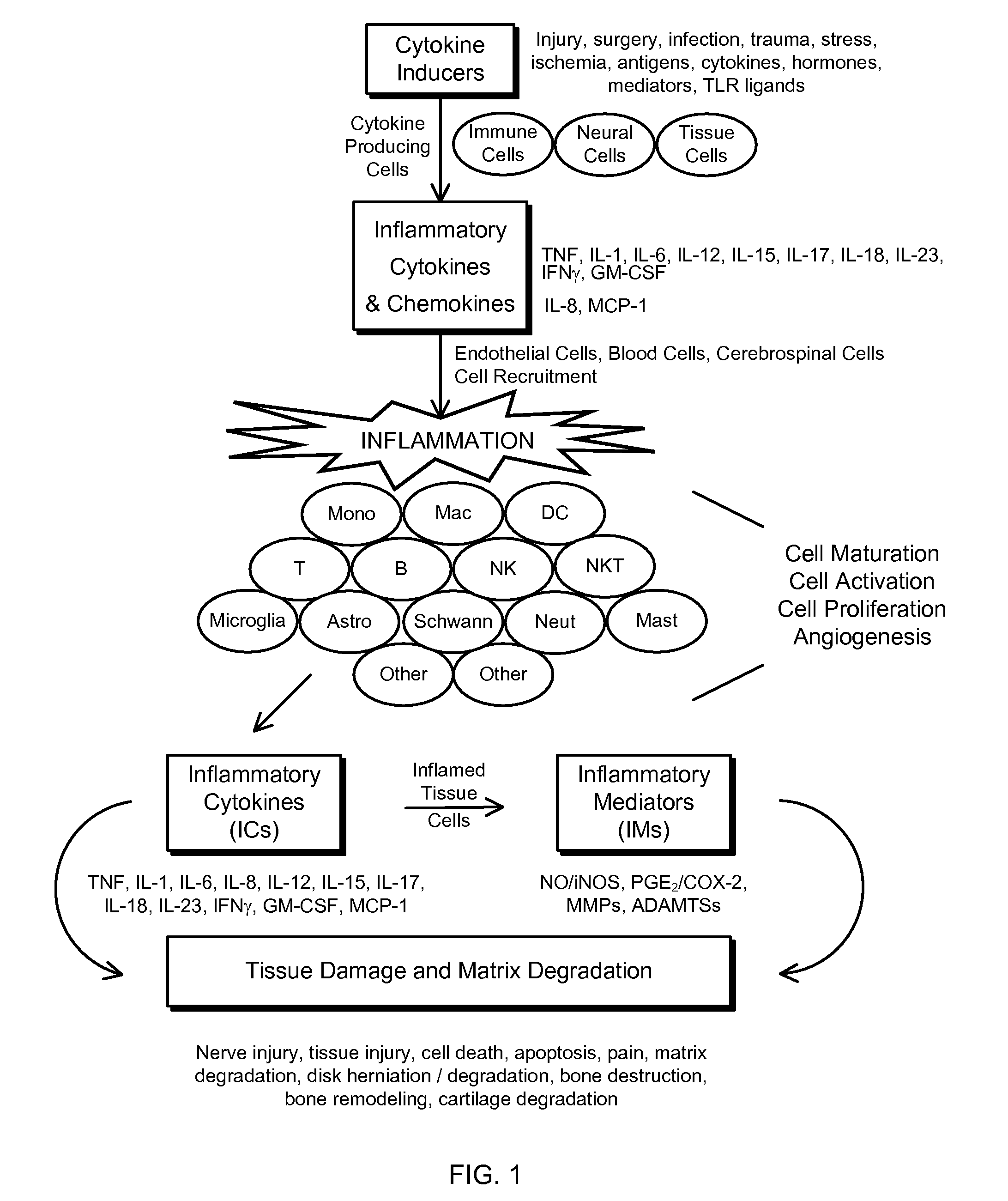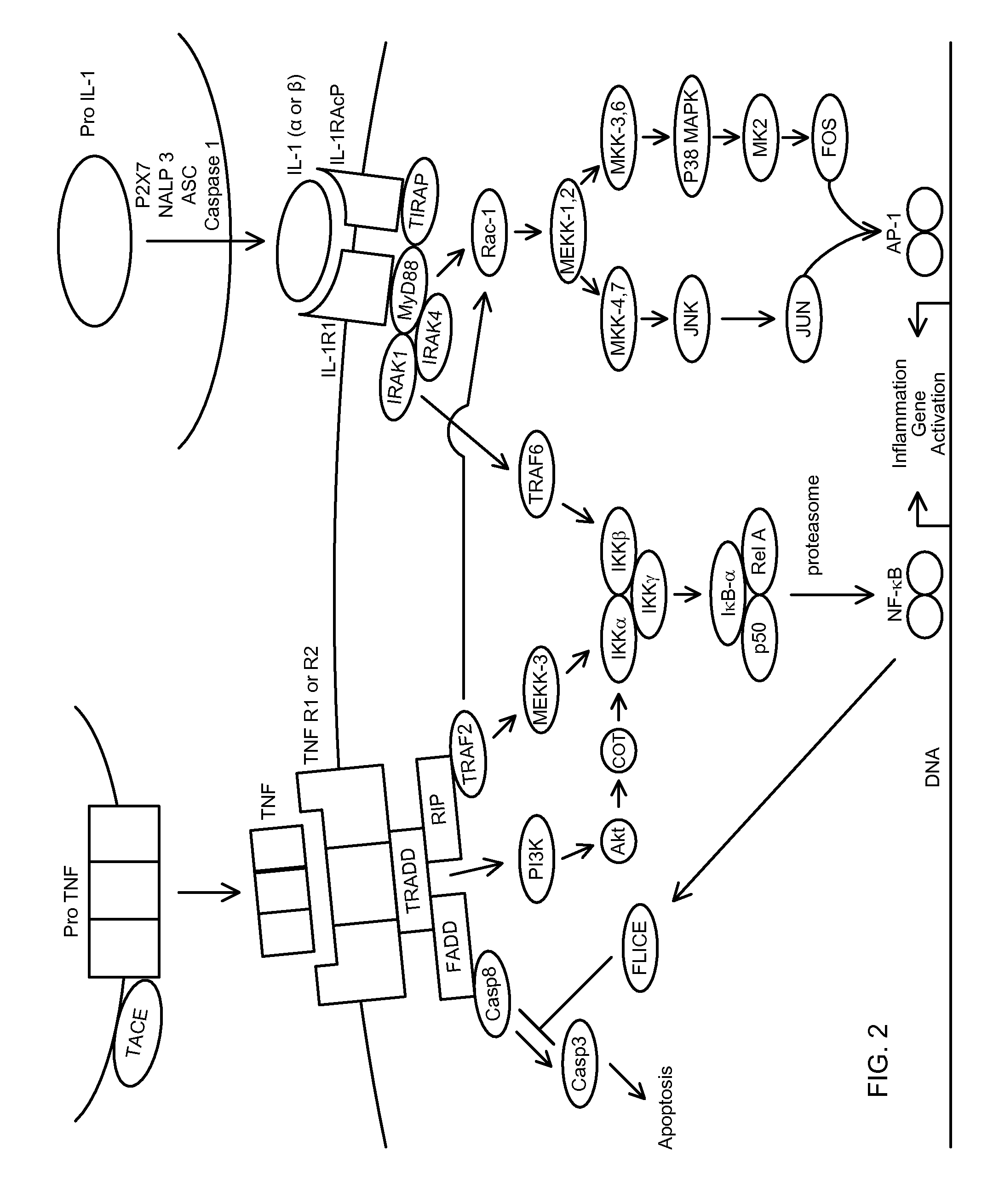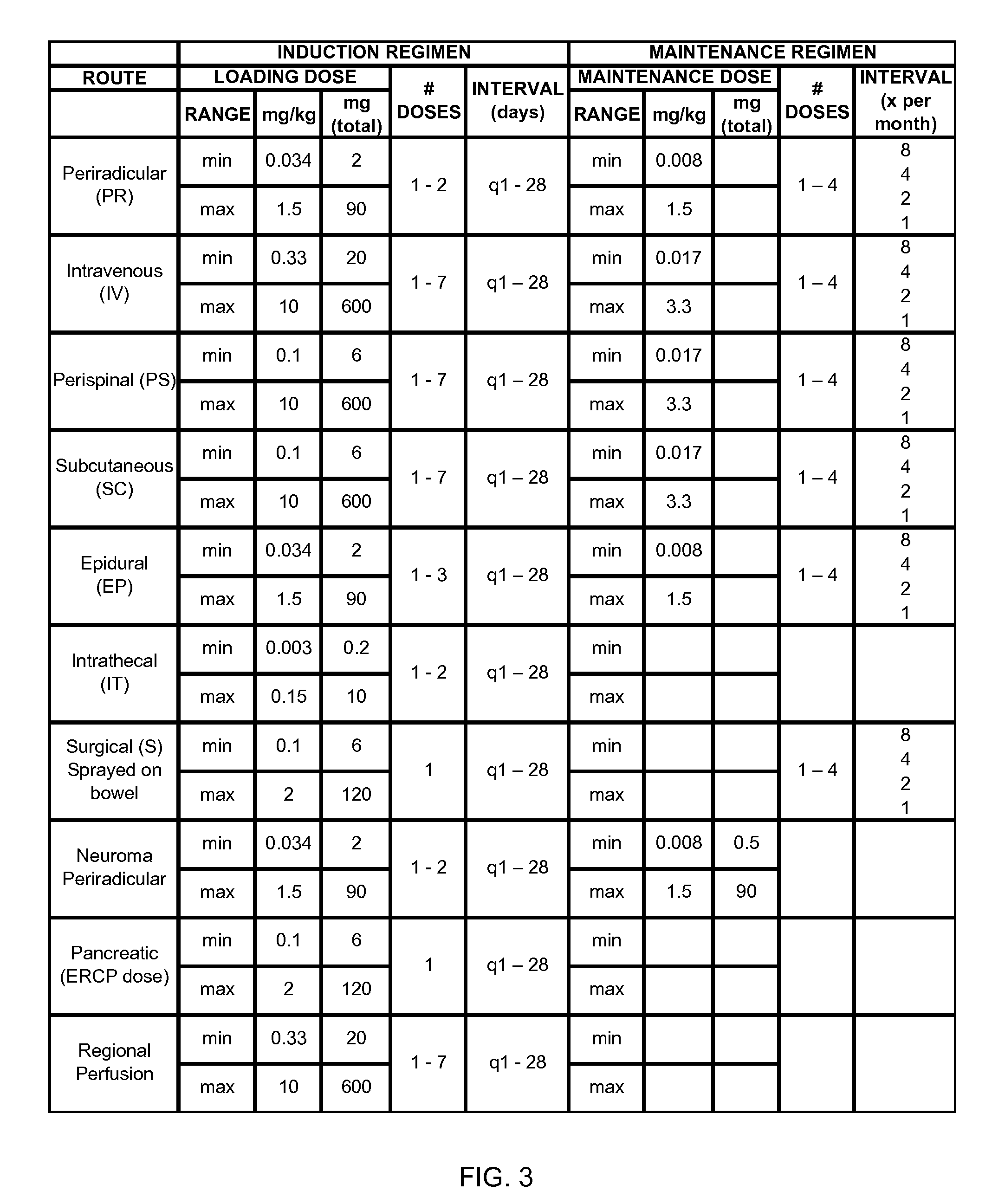Novel regimens for treating diseases and disorders
a disease and disorder technology, applied in the field of new regimens for treating diseases and disorders, can solve the problems of inability to readily access certain tissues, risk, expense, and availability of invasive administration, and achieve the effect of improving the outcome and speeding up post-operative recovery
- Summary
- Abstract
- Description
- Claims
- Application Information
AI Technical Summary
Benefits of technology
Problems solved by technology
Method used
Image
Examples
example 1
Subject Eligible for Microdiskectomy
[0267]A subject who is suffering from low back pain and R leg pain in the distribution of the L4 NR is seen by his general practitioner (GP), who recommends conservative treatment (e.g., rest and analgesics) for a period of 6 weeks. After 6 weeks, the subject returns to the GP complaining that the pain has not resolved. The subject is referred to a spine interventionalist to determine if the subject should undergo a partial or full diskectomy. After evaluating the patient, including a physical exam documenting radiculopathy in an L4 distribution, a positive straight leg raising test, and MRI assessment, the spine interventionalist determines that the patient has a herniated disk at L4 and is eligible for a microdiskectomy based on the subject meeting generally accepted guidelines for such a procedure, including MRI findings of HD at the appropriate level, the persistent pain of the subject for more than 6 weeks, and the failure of conventional con...
example 2
Subject Eligible for Facet Joint Replacement
[0269]A subject suffering from right sided back and buttock pain is seen by his GP, who recommends conservative treatment (e.g., rest, analgesics) for a period of 8 weeks. During this period, the subject independently attends a chiropractic practitioner, but experiences no lasting relief from the chiropractor's manipulations. After 8 weeks, the subject returns to the GP complaining that the pain has not resolved. The GP, therefore, refers the subject to a spine surgeon, who evaluates the subject.
[0270]The spine surgeon performs a physical evaluation of the subject, which includes demonstrating a reproduction of pain with ipsilateral bending, mild point tenderness over the affected facet joint, and a consistent distribution of the subject's pain over a lumbar facet innervation pattern. Based on these observations, the spine surgeon determines that the patient has severe facet arthropathy in the R L3-4 facet joint, based on the subject meeti...
example 3
Subject with Complex Regional Pain Syndrome Type I
[0272]A female subject with a stressful home life notes severe pain in her right leg after sitting crossed legged on the floor in a position similar to the ‘Lotus position’ for an extended period of time. The subject attends school, however, but has to limp, and notices pain when her clothing touches the skin of her leg. Over the next two days the subject's pain increases, and her leg begins to look slightly red and swollen. The subject sees her pediatrician, who initially examines the subject for signs of bug bites in the days prior to the start of her pain. However, the pediatrician does not observe any hallmark signs of bites, scratches, or breaks in the subject's skin. The pediatrician recommends that the girl does not attend school for a few days, rests at home, and takes a mild oral analgesic if the pain continues. Over the next few days, however, the subject's leg continues to worsen, becoming increasingly swollen with a shiny...
PUM
| Property | Measurement | Unit |
|---|---|---|
| molecular weight | aaaaa | aaaaa |
| molecular weight | aaaaa | aaaaa |
| molecular weight | aaaaa | aaaaa |
Abstract
Description
Claims
Application Information
 Login to View More
Login to View More - R&D
- Intellectual Property
- Life Sciences
- Materials
- Tech Scout
- Unparalleled Data Quality
- Higher Quality Content
- 60% Fewer Hallucinations
Browse by: Latest US Patents, China's latest patents, Technical Efficacy Thesaurus, Application Domain, Technology Topic, Popular Technical Reports.
© 2025 PatSnap. All rights reserved.Legal|Privacy policy|Modern Slavery Act Transparency Statement|Sitemap|About US| Contact US: help@patsnap.com



